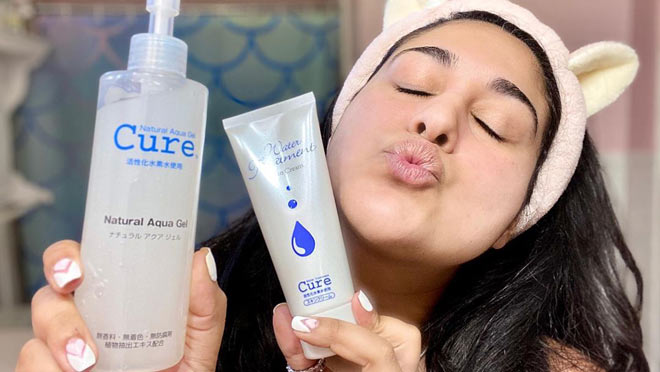
From compensating content creators inappropriately to lax vetting processes, many factors impact influencer marketing results. Poorly managed campaigns can waste resources, inadequately support your new product introduction, and diminish trust in your brand.
If you're reading this article, maybe you've experienced a disappointing influencer campaign, and you're trying to determine why it failed. Or perhaps you're doing your homework before you start one to ensure it goes well.
Either way, you've come to the right place. In this piece, we highlight six myths about influencer marketing and how they can affect results.
By learning a few fundamentals, we're confident you'll discover what the problems were in your past campaigns and understand how to proceed going forward. If you're interested in boosting brand awareness and your bottom line, consider these mistakes to avoid when mapping out this year's marketing plan.

Myth #1: You Have to Pay Influencers
There are two models of paying influencers: cash payments and product gifting (also known as trade collaborations). Cash payments are straightforward; influencers create content, and you pay them. In the product gifting method, influencers accept a product gift as compensation. In essence, they trade their services for a product.
The industry myth is that you must work with paid influencers to get quality content. There is definitely a time and place for cash payments. But if you have a product that influencers are excited to share with their audience, you can reduce your costs and ensure more authentic content right from the start with trade collaborations.
More important than the cost savings of paying with products, is the benefit of finding true evangelists of your brand. Paid collaborations may attract influencers who are looking for an income boost instead of influencers who are truly excited about your product.
Paying content creators to promote your brand can diminish consumer trust. When money changes hands, influencers are more likely to promote products they don't genuinely love. Ultimately, these paid endorsements can dilute your brand's credibility.
Millennials are especially perceptive of content that is not genuine. They've grown up with technology and have become distrustful. Younger generations can quickly spot a false post. While most people love and trust a recommendation from a trusted friend, getting "sold to" is downright obnoxious.
A better solution is to participate in trade collaborations. In a trade collaboration, influencers post in exchange for products. Additionally, they have the choice of whether or not to post based on whether or not they liked a product. For instance, at ApexDrop, influencers are allowed to fill out a customer feedback survey in lieu of a post. By having this "out," brands and followers can count on reviews and recommendations being genuine.
Trust is an invaluable resource, and when it's damaged, it's incredibly difficult to repair. For influencers, post consistency is a core factor of preserving their audience's trust. For this reason, brands should allow micro influencers to retain creative control over their own content because the familiarity will resonate with their followers.
As Zak Stahlsmith, CEO of ApexDrop, says, "Brands are starting to see the dark side of influencer marketing. They're realizing that when you pay influencers, the content is biased and inauthentic." Ultimately, real lifestyle artists will drown out the flim-flam of fake influencers.
All of this is not to say that content creators should never be paid. They are talented content creators, entertainers, and educators. Their influence has value. However, when brands offer cash payments, the authenticity of the messaging can suffer.
Myth #2: Macro Influencers are more effective than Micros
Celebrities and socialites might have massive audiences, but this doesn't mean they have steady engagement or the ability to target. In fact, north of 100,000 followers, the rate of likes and comments begin to plummet.
If you want to target a specific niche, get true influence, and high engagement rates, brands should align with content creators with a niche following and high engagement. The average influencer in ApexDrop's network has 15,000 followers. As ApexDrop CEO, Zak Stahlsmith notes, "It's where both engagement and trust are high."
High engagement rates (between 5-10%) are critical to the success of a campaign, as they indicate people are paying attention to what the influencer is posting. Brands can then use these numbers as key performance indicators.

To explain this further, let's use hit-maker Taylor Swift, as our example. She has roughly 125 million followers, an average engagement rate of .93%, and charges $750,000 per post. At this rate, TSwift would earn 1,162,000 engagements. With these numbers, brands would pay $.64 per engagement!
Not sure if that's high or low? Let's consider an ApexDrop micro influencer with a 15k following and a 7.0% engagement rate. At this rate, our average micro would pull in 1,050 engagements.
Remember, Apex campaigns run via trade collaboration, meaning content creators post in exchange for products. So, for example, if at-cost your product is $25, you're only paying $.02 per engagement!
You also tap into the niche expertise of the influencers in the micro space. Fitness influencers are seen as fitness experts, whereas people often see macro influencers as generalists. Furthermore, followers trust that the micros are using the products they review.
Myth #3: You Always Have The Right to Reuse Content Created for Your Brand
As you shop around for agencies and/or influencers, ensure that everyone you work with offers an irrevocable and indefinite license to campaign content. When brands fail to negotiate their rights, it puts constraints on when, how long, and where you can repurpose the images and videos.
As an example, let’s say you’ve found the perfect photograph that brilliantly captures the essence of your brand and strikes exactly the right tone. From your website and blogs to your social accounts and print ads, you’ve used it everywhere. Now imagine that your license is up. Suddenly you have to remove that photo from every platform.
Minimize the headaches and expenses of licensing problems by partnering with a seasoned micro influencer marketing agency that ensures you receive free licenses over all of your lifestyle photography.
Myth #4: Your Brand Has To Align with a Certain "Look"
Another potential blunder companies make when working with influencers is prejudging them based on looks rather than the influencer’s actual audience and content quality.
While it’s easy to assume consumers only care about looks, this cliche has (thankfully) come and gone. People are nuanced. They want to see original content. They follow influencers who inspire them and have a real message.

Additionally, younger generations are embracing diversity more than ever. Brands who choose to let go of the vanilla offerings of the past will continue to thrive and grow. According to Pew Research Center, Millennials and Gen Zs are the most racially and ethnically diverse adult generations in the nation’s history.
Myth #5: Content Matters More Than Context
In the case of influencer marketing, context is equally as important as content. Say, for instance, you’re a company that makes vegan protein bars and shakes. Part of your mission is to educate people about how animal products aren’t necessary to live a vibrant, healthy life.
You participate in a collaboration with a fitness influencer with exceptional photographs and captions. He snaps a photo of himself at the top of a mountain, gazing out at the horizon, while munching one of your vegan protein bars. Alas, some further digging reveals that he also considers himself a BBQ connoisseur. The lack of appropriate context diminishes the authenticity of the post.
A good micro influencer agency with experience researching potential influencers would have pointed out the bad fit before you publicly aligned yourself with a carnivorous content creator. Beyond being a bad fit, misaligned values between your brand and an influencer can also wreak havoc if that influencer ever posts offensive material.
Untangling a bad relationship takes time and money. Get it right the first time.
Myth #6: All Followers Are Real
Social media platforms are rife with fake accounts. A New York Times investigation revealed that sites like Social Envy and DIYLikes.com enable people to buy followers on any social media platform with little more than a credit card number.
The Times researched the practice by creating a fake Twitter account and paying American company Devumi $225 for 25,000 fake followers, or about a penny apiece. Just like Devumi advertised, the first 10,000 followers looked real. Only a trained eye could discern that the followers were fake.
However, it’s no secret that there are fake accounts—which leads us to another common mistake: Wasting time parsing through accounts to ensure that they’re real is a huge resource sink. Don’t make the mistake of burning up workdays sifting through influencer marketplaces when premier agencies, such as ApexDrop, have rigorously vetted networks. This time savings will allow you to do what you do best: create amazing products that make people happy.
Connect With Content Creators Efficiently
ApexDrop maintains an extensive network of micro-influencers who are ready to post in exchange for your products. Further, we offer one of the most cost-effective and easiest ways to produce influencer content in bulk. Schedule a call to learn more.
